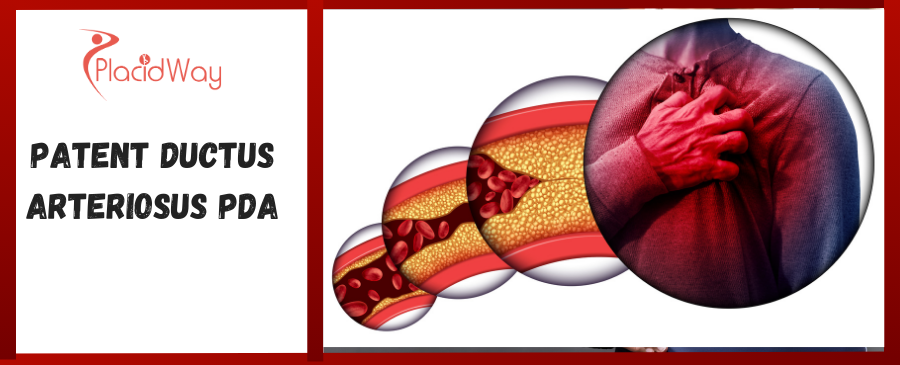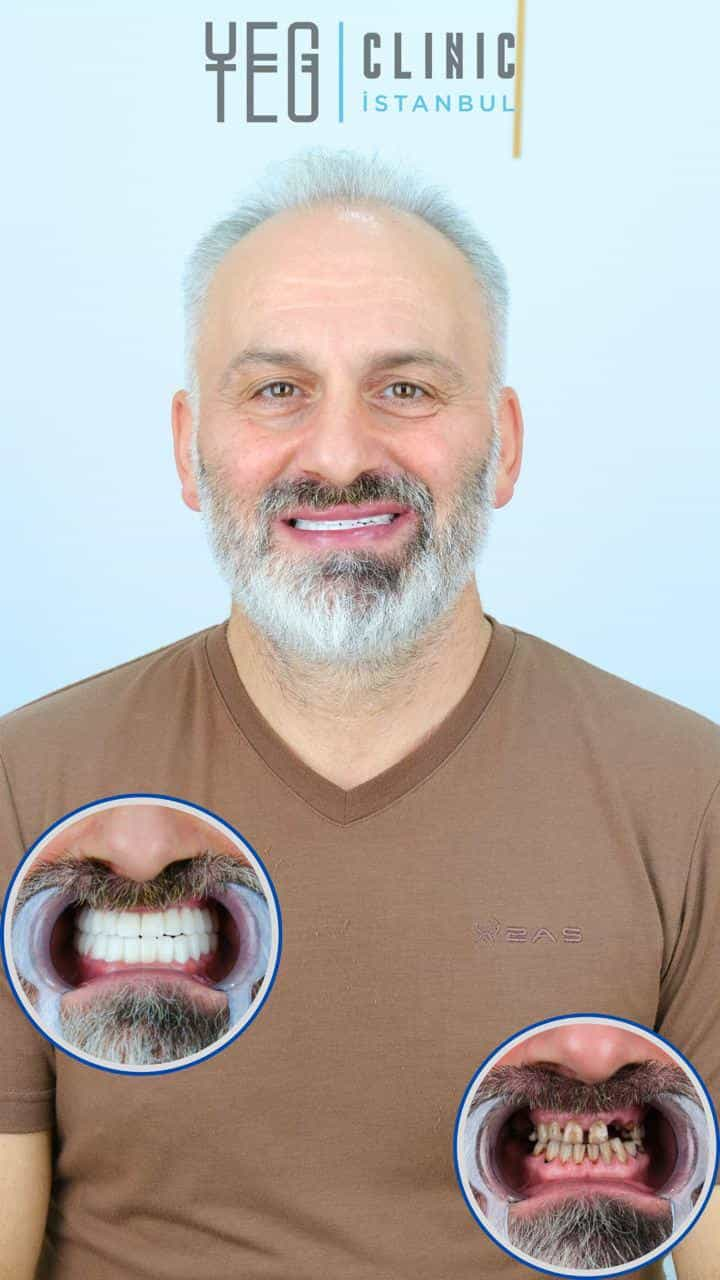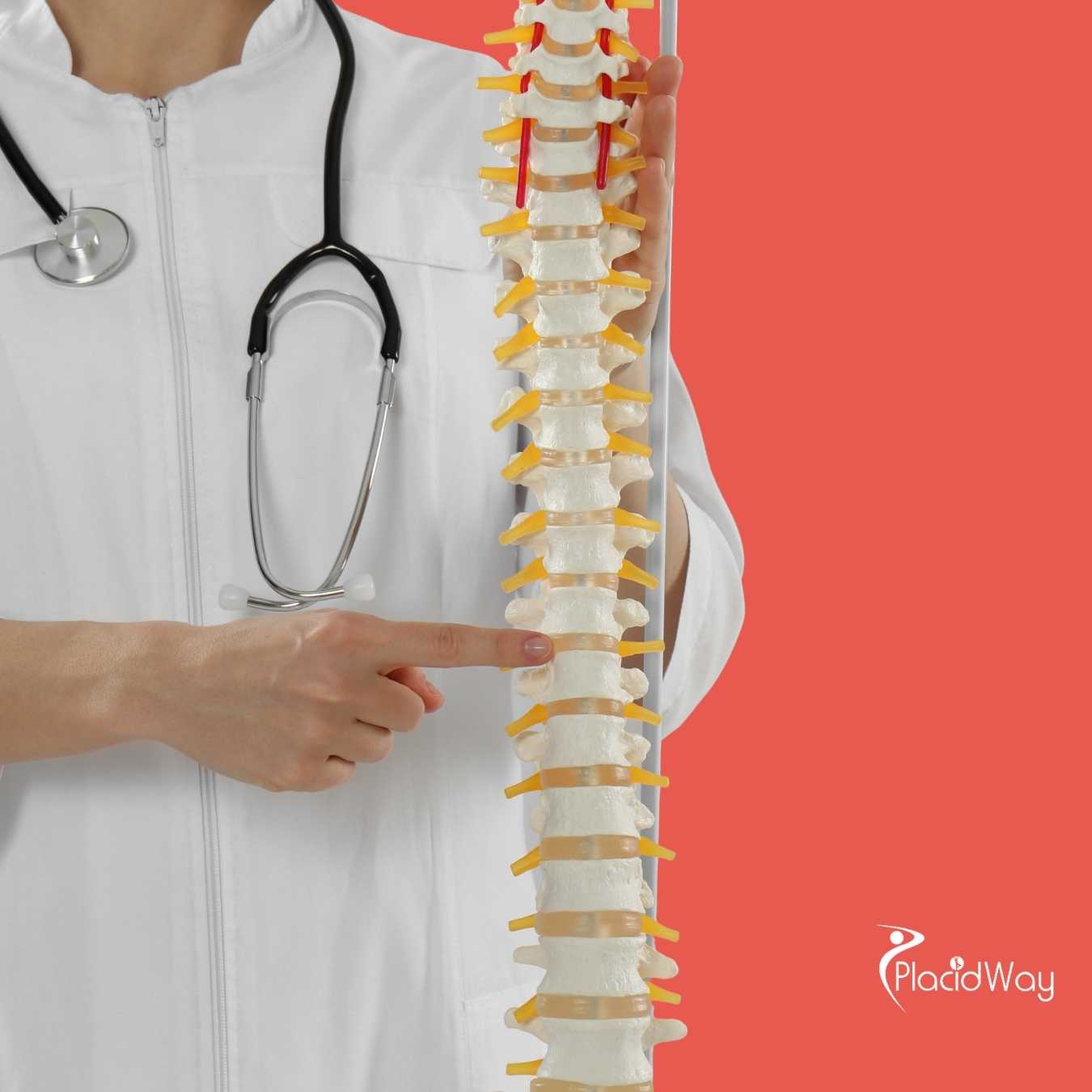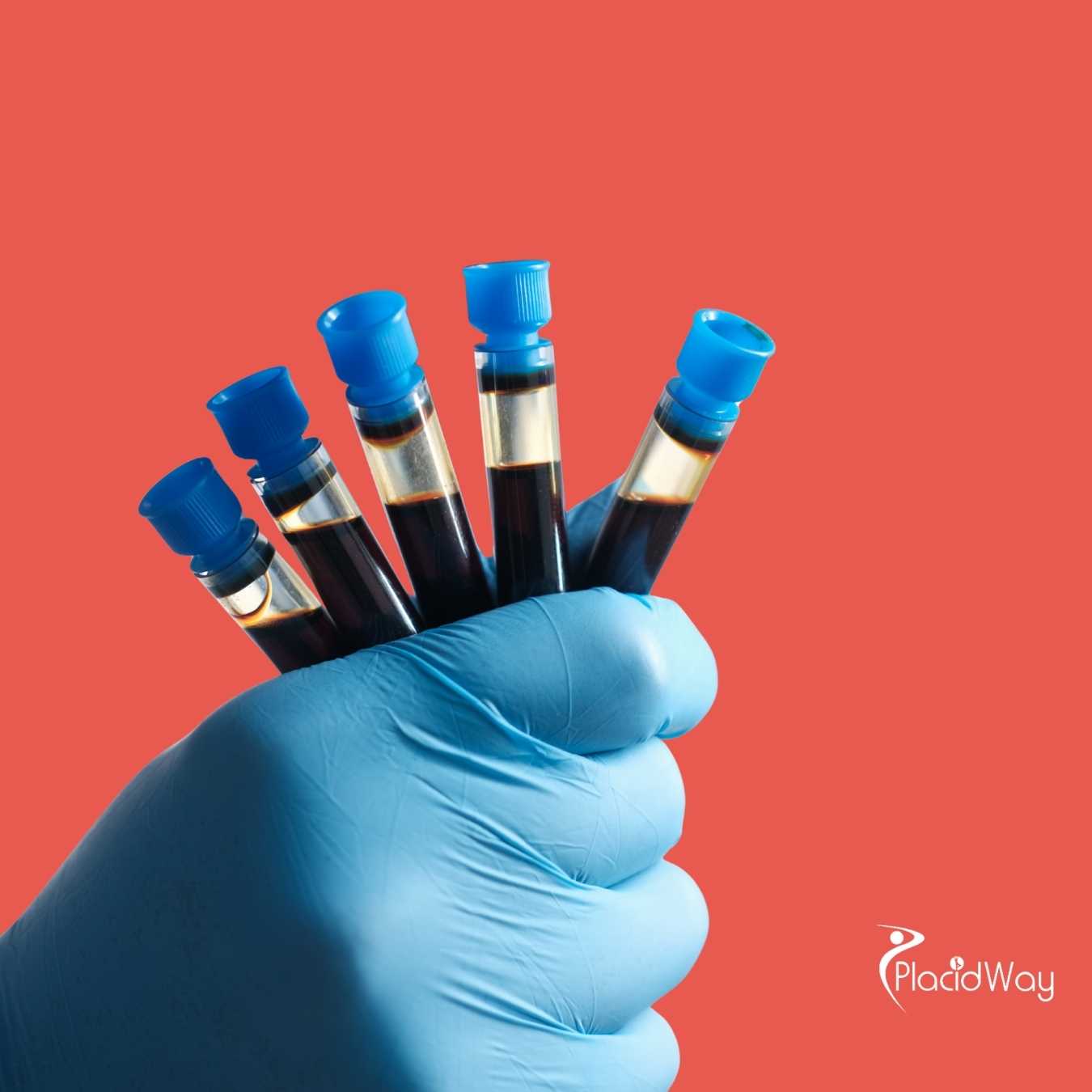
Understanding PDA Closure: A Guide to Treating Patent Ductus Arteriosus Worldwide
Discovering that you or a loved one has a heart condition, especially a congenital defect like Patent Ductus Arteriosus (PDA), can be concerning. Many people search for "what is PDA heart defect," "PDA treatment options," and "best hospitals for PDA closure" to understand this condition better. PDA is a persistent opening between two major blood vessels leading from the heart, which is normal before birth but should close shortly after. When it doesn't, it can lead to complications, making PDA closure a vital procedure for restoring healthy heart function.
This comprehensive guide is designed to shed light on PDA, its symptoms, causes, and the various treatment approaches available. We'll delve into everything from the latest medical procedures to recovery expectations, and importantly, explore why so many individuals are now considering world-class medical facilities abroad for this crucial treatment. If you're looking for "affordable PDA surgery," "safe heart treatment abroad," or simply the best "medical tourism options for congenital heart defects," you've come to the right place. Our goal is to empower you with the knowledge needed to make informed decisions about your health journey, ensuring access to quality care no matter where you are in the world.
Let’s explore the path to a healthier heart together, focusing on clarity, compassion, and practical guidance for your PDA treatment journey.
What are the symptoms of Patent Ductus Arteriosus (PDA)?
The signs of PDA can manifest differently depending on the size of the opening and the age of the individual. In premature infants or those with a larger PDA, symptoms are often more pronounced. Parents frequently search for "signs of PDA in babies" or "infant heart defect symptoms."
Symptoms in Infants and Young Children:
- Poor Feeding and Growth: Babies may tire easily during feedings, leading to insufficient weight gain or "failure to thrive."
- Rapid Breathing or Shortness of Breath: Known as tachypnea, this indicates the heart and lungs are working harder.
- Sweating During Feeding or Crying: Another sign of increased effort and heart strain.
- Easy Fatigability: Infants may seem unusually sleepy or less active.
- Heart Murmur: A doctor might hear a distinct "machine-like" heart murmur during an examination.
- Frequent Lung Infections: Due to increased blood flow to the lungs.
Symptoms in Older Children and Adults:
For individuals with a smaller PDA, symptoms might not appear until later in life, or they might be mild enough to go unnoticed for years. Common searches include "symptoms of PDA in adults" or "what does PDA feel like."
- Shortness of Breath: Especially during exercise or physical activity.
- Fatigue: Feeling unusually tired, even after minimal exertion.
- Heart Palpitations: A sensation of a racing, pounding, or fluttering heart.
- Poor Exercise Tolerance: Difficulty keeping up with peers during physical activities.
- Recurrent Respiratory Infections: Similar to infants, but less common.
If any of these symptoms are present, it's crucial to seek medical evaluation. Early diagnosis of this "baby heart condition" allows for timely intervention, improving outcomes significantly.
What causes Patent Ductus Arteriosus (PDA) and who is at risk?
PDA is categorized as a congenital heart defect, meaning it's present at birth. Before birth, the ductus arteriosus is a vital blood vessel that allows blood to bypass the baby's lungs, as oxygen is received from the mother. However, this vessel is designed to close spontaneously within the first few days or weeks after birth. When it remains open, it's called Patent Ductus Arteriosus.
Key Factors and Risk Factors:
- Premature Birth: This is the most significant risk factor. The earlier a baby is born, the higher the chance of PDA. The lungs and heart are less developed, making the closure process more difficult. People often search for "preemie heart problems" or "PDA in premature babies."
- Genetic Factors: While not strictly hereditary in most cases, a family history of heart defects can slightly increase the risk. Searches like "is PDA genetic?" are common.
- Rubella Infection During Pregnancy: If a mother contracts rubella (German measles) during pregnancy, particularly in the first trimester, her baby has a higher risk of developing PDA and other congenital heart defects.
- Down Syndrome and Other Genetic Conditions: Babies with certain genetic syndromes, like Down syndrome, are more prone to congenital heart defects, including PDA.
- High Altitude Birth: Babies born at higher altitudes may have a slightly increased risk of PDA, possibly due to lower oxygen levels.
- Female Sex: PDA is more common in girls than in boys.
Understanding these risk factors helps in early detection and management, ensuring that "heart defect in newborn" concerns are addressed promptly.
What types of procedures are available for PDA closure?
When it comes to treating PDA, the medical approach varies depending on the patient's age, the size of the PDA, and whether it's causing symptoms. Patients often ask, "PDA surgery vs catheter closure" or "non-surgical PDA treatment."
1. Medical Management (Pharmacological Closure):
- For Premature Infants: In very young or premature babies, medication can often encourage the PDA to close. Nonsteroidal anti-inflammatory drugs (NSAIDs) like ibuprofen or indomethacin are commonly used. These drugs block chemicals in the body that keep the PDA open. This is typically a first-line approach for "PDA in preemies."
- Limitations: This method is less effective in full-term infants or older children/adults, where the ductus arteriosus tissue is more mature and less responsive to medication.
2. Catheter-Based Closure (Transcatheter Closure):
- Minimally Invasive: This is the most common method for closing a PDA in full-term infants, children, and adults. It's often referred to as "keyhole heart surgery" or "non-surgical heart repair."
- Procedure: A thin, flexible tube (catheter) is inserted into a blood vessel (usually in the groin) and guided to the heart. A small device, such as a coil or an occluder (a small mesh plug), is then deployed to seal the PDA.
- Advantages: Shorter hospital stay (often overnight), faster recovery, smaller incision (or no incision, just a puncture), and less pain compared to surgery.
3. Surgical Ligation (Open Surgical Closure):
- Traditional Approach: This involves a surgical incision, typically on the left side of the chest, between the ribs. The surgeon directly ties off (ligates) or clips the PDA to close it permanently. This is a "PDA operation" for cases where catheterization is not suitable.
- When It's Used: Surgical ligation is usually reserved for very large PDAs, when catheter closure has failed, or in very young infants where a device might not be appropriate. It might also be preferred if other cardiac defects need to be repaired simultaneously.
- Advantages: Highly effective and reliable, especially for complex cases.
- Disadvantages: Longer hospital stay, more extensive recovery, and a visible scar.
The choice of procedure will be discussed in detail by your cardiology team, considering all individual factors.
Who is eligible for PDA closure and when is it recommended?
Deciding when and who should undergo PDA closure is a critical medical decision. Patients frequently ask, "when to close PDA" or "PDA closure age limit." The primary goal is to prevent complications like heart failure, pulmonary hypertension, and endocarditis.
General Recommendations for PDA Closure:
- Symptomatic PDA: If the PDA is causing symptoms such as poor growth, respiratory distress, fatigue, or poor exercise tolerance at any age, closure is usually recommended.
- Asymptomatic PDA with Heart Strain: Even if a person doesn't have obvious symptoms, if the PDA is large enough to cause enlargement of the heart chambers or increased pressure in the lung arteries (pulmonary hypertension), closure is typically advised to prevent long-term damage.
- Prevention of Complications: Closure is also recommended to prevent the future risk of infective endocarditis (a serious heart infection), even if the PDA is small and asymptomatic.
Eligibility Factors:
- Age:
- Premature Infants: Medical management is often tried first. If it fails or symptoms are severe, surgical ligation may be performed, sometimes within days of birth.
- Full-Term Infants, Children, and Adults: Catheter-based closure is generally preferred once the child reaches a suitable weight (often around 6 months to 1 year, though it can be done earlier for large PDAs or later in life). There's no strict "PDA closure age limit" for older individuals, provided they are otherwise healthy enough for the procedure.
- Size and Location of PDA: The specific characteristics of the PDA itself play a role. Very small, "silent" PDAs that cause no symptoms or heart strain might be monitored rather than closed immediately. However, most clinically significant PDAs are closed.
- Overall Health: The patient's general health, presence of other medical conditions, and suitability for anesthesia are all carefully assessed.
A cardiologist will evaluate each case individually, weighing the risks and benefits of intervention versus watchful waiting. This ensures the "best PDA treatment" plan is chosen for every patient.
What is the recovery time and what can I expect after PDA closure?
Understanding the recovery process is crucial for patients and their families. Many people search for "PDA closure recovery time" or "life after PDA surgery." The recovery experience largely depends on the type of procedure performed.
Recovery After Catheter-Based PDA Closure:
- Hospital Stay: Typically 1-2 days, often just overnight for observation.
- Immediate Post-Procedure: The patient will need to lie flat for a few hours to ensure the puncture site heals. Some discomfort or bruising at the catheter insertion site (usually the groin) is normal.
- Activity Restrictions: Strenuous activity, heavy lifting, and rough play are usually restricted for 1-2 weeks to allow the device to integrate and the puncture site to heal. Most normal activities can resume quickly.
- Return to School/Work: Children can usually return to school within a few days to a week. Adults can return to light work within a few days.
- Follow-up: Regular follow-up appointments with a cardiologist are essential, including echocardiograms to ensure the device is in place and the PDA remains closed.
Recovery After Surgical PDA Ligation:
- Hospital Stay: Generally longer, ranging from 3 to 7 days, sometimes more, depending on the patient's age and overall health.
- Immediate Post-Procedure: Patients will likely experience more pain and discomfort due to the incision. Pain medication will be provided.
- Activity Restrictions: More significant restrictions are in place for 4-6 weeks, including avoiding heavy lifting, strenuous exercise, and any activities that could strain the chest muscles or incision site.
- Return to School/Work: Children may need 2-4 weeks off school. Adults typically require 4-6 weeks off work, especially if their job involves physical labor.
- Scar Care: The incision site will need careful cleaning and monitoring for signs of infection. A visible scar will remain.
- Follow-up: Regular cardiology check-ups are vital to monitor heart function and overall recovery.
Long-Term Outlook:
After successful PDA closure, most individuals go on to live full, active lives without further cardiac issues related to the PDA. The heart can recover from the strain, and symptoms typically resolve. This "heart defect treatment" often leads to a significant improvement in quality of life.
What are the risks and potential side effects of PDA closure?
While PDA closure procedures are generally safe and effective, like any medical intervention, they carry potential risks and side effects. Patients often inquire about "risks of PDA surgery" or "complications of PDA closure." It's important to discuss these thoroughly with your medical team.
General Risks for Both Catheter and Surgical Procedures:
- Bleeding or Bruising: At the incision or puncture site.
- Infection: At the surgical site or general bloodstream infection.
- Allergic Reaction: To anesthesia, contrast dye, or medications.
- Anesthesia Complications: Nausea, vomiting, adverse reactions to anesthetic agents.
- Heart Rhythm Disturbances (Arrhythmias): Usually temporary, but can be more persistent in rare cases.
Specific Risks for Catheter-Based Closure:
- Device Embolization or Migration: The closure device could move from its intended position, requiring a second procedure to retrieve or reposition it.
- Residual Shunt: The device may not completely close the PDA, leaving a small residual opening that might require further intervention.
- Vessel Injury: Damage to the blood vessels used for catheter insertion.
- Device Erosion: Very rarely, the device can erode into adjacent structures.
Specific Risks for Surgical Ligation:
- Nerve Damage: Injury to the recurrent laryngeal nerve, which can lead to vocal cord paralysis and a hoarse voice (usually temporary).
- Pneumothorax (Collapsed Lung): Rare, due to the chest incision.
- Post-operative Pain: Generally more significant than with catheter closure.
- Scarring: A permanent visible scar on the chest.
It's important to remember that serious complications are rare, and the benefits of closing a significant PDA typically far outweigh the potential risks, especially when performed by experienced medical professionals. Your healthcare provider will ensure you understand all potential risks associated with your "heart defect repair" plan.
How does the cost of PDA closure compare globally?
One of the most compelling reasons for considering PDA closure abroad is the significant cost difference. Patients often search for "PDA closure cost," "affordable heart surgery abroad," or "cost of heart defect repair." The price can vary widely based on the country, the healthcare system, the type of procedure, and whether it's performed in a private or public facility.
Estimated Cost Comparison for PDA Closure (Catheter-Based)
(These are approximate ranges and can vary based on facility, surgeon, and specific patient needs. Costs typically include hospital stay, surgeon's fees, anesthesia, and the closure device, but always confirm package details.)
| Country | Estimated Cost Range (USD) | Notes |
|---|---|---|
| United States | $25,000 - $65,000+ | Highest costs, often subject to insurance complexities. |
| United Kingdom | $20,000 - $40,000+ | NHS covers residents, private care is expensive. |
| Canada | $20,000 - $45,000+ | Public system covers residents, private options for non-residents. |
| India | $5,000 - $12,000 | Highly competitive pricing, world-class facilities. |
| Turkey | $6,000 - $15,000 | Excellent quality, European standards, rising popularity. |
| Mexico | $7,000 - $14,000 | Convenient for North American patients, good value. |
| Thailand | $8,000 - $16,000 | Reputable for medical tourism, high-quality care. |
As you can see, the potential savings by choosing "international heart surgery" or "medical treatment abroad" can be substantial, often 50-80% lower than in Western countries, without compromising on quality.
Why consider PDA closure abroad for better value and care?
For many patients, the decision to seek medical treatment outside their home country is driven by a combination of factors, often centered on the search for "medical tourism for PDA" or "best countries for heart surgery."
- Significant Cost Savings: As highlighted in the cost comparison, the primary driver for medical tourism is often the dramatic reduction in expenses, making life-changing procedures accessible to more people. This is especially true for those without adequate insurance or facing high deductibles.
- Access to Specialized Expertise: Many international hospitals boast world-renowned cardiologists and cardiac surgeons who specialize in complex congenital heart defects like PDA. These professionals often have extensive experience with a high volume of cases, ensuring top-tier care.
- State-of-the-Art Facilities and Technology: Leading medical tourism destinations often invest heavily in modern hospitals equipped with the latest diagnostic and treatment technologies, comparable to or even surpassing those in Western countries.
- Reduced Wait Times: In some countries, long waiting lists for specialized procedures can delay critical treatment. Traveling abroad can offer immediate access to care, which is particularly important for progressive conditions.
- Comprehensive Care Packages: Many international hospitals and medical tourism facilitators (like PlacidWay) offer all-inclusive packages that cover not just the procedure, but also accommodation, transfers, translation services, and even post-operative care coordination, simplifying the entire process for patients and their families.
- Privacy and Anonymity: For some, undergoing treatment away from home offers a degree of privacy that is appealing.
- Combining Treatment with Travel: The opportunity to experience a new culture and recover in a serene environment can add an appealing dimension to the medical journey.
Choosing "international hospitals for PDA" can provide an unparalleled combination of affordability, quality, and convenience.
Which countries offer the best value for PDA treatment?
When searching for "travel for heart surgery" or "medical tourism destinations for cardiology," several countries consistently emerge as leaders in offering high-quality, affordable PDA closure.
- India: Renowned globally for its advanced medical infrastructure, highly skilled English-speaking doctors, and state-of-the-art hospitals, many of which are JCI (Joint Commission International) accredited. India offers some of the most competitive prices for cardiac procedures, making it a top choice for "affordable heart surgery in India."
- Turkey: Positioned at the crossroads of Europe and Asia, Turkey has rapidly become a medical tourism hub. It boasts modern hospitals with cutting-edge technology, European-trained surgeons, and excellent patient care, all at a fraction of Western costs.
- Mexico: A convenient option for patients from the United States and Canada, Mexico offers highly reputable medical facilities, particularly in border cities and major urban centers. Many Mexican doctors are US-trained, and the proximity makes travel logistics simpler.
- Thailand: Known for its warm hospitality and beautiful landscapes, Thailand also has a sophisticated medical tourism industry. Hospitals like Bumrungrad International Hospital are internationally acclaimed for their high standards of care, advanced technology, and luxurious patient experience.
- South Korea: While often a bit more expensive than the other Asian options, South Korea offers incredibly advanced medical technology, highly skilled specialists, and a reputation for meticulous care and excellent outcomes, particularly in complex procedures.
These countries are popular because they strike an optimal balance between cost-effectiveness, quality of care, and patient experience, making them excellent choices for "international medical care."
What should I expect when traveling for PDA closure abroad, including safety and quality?
Traveling for a medical procedure like PDA closure requires careful planning and reassurance regarding safety and quality. Patients often wonder, "how to choose an international hospital" or "safe medical tourism."
What to Expect When Traveling Abroad:
- Pre-Trip Coordination: A reputable medical tourism facilitator (like PlacidWay) or the hospital's international patient department will assist with travel arrangements, visa applications, accommodation, and scheduling all medical appointments.
- Arrival and Transfers: You'll typically be met at the airport and transferred to your accommodation or the hospital.
- Consultations and Pre-Procedure Tests: Upon arrival, you'll undergo thorough consultations with the cardiac team, including examinations and diagnostic tests (e.g., echocardiogram, ECG) to confirm the diagnosis and plan the procedure.
- The Procedure and Hospital Stay: The PDA closure will be performed, followed by the necessary hospital recovery period (as discussed in the recovery section).
- Post-Procedure Care and Follow-up: You'll receive instructions for post-operative care, medications, and follow-up appointments. Many facilities offer virtual follow-ups once you return home.
- Language Support: Most international hospitals catering to medical tourists have English-speaking staff and offer translation services.
- Accommodation for Companions: Facilities often assist in arranging accommodation for family members or companions traveling with the patient.
How to Ensure Safety and Quality Abroad:
Ensuring you receive top-tier care is paramount. Here’s how to choose wisely:
- Accreditation: Look for international accreditations, especially JCI (Joint Commission International). This indicates that the hospital meets rigorous global standards for patient safety and quality of care. Many reliable hospitals also have local accreditations.
- Surgeon Credentials and Experience: Research the cardiologist or cardiac surgeon's qualifications, board certifications, experience with PDA closures, and success rates. Don't hesitate to ask for their CV.
- Technology and Infrastructure: Ensure the hospital uses modern equipment and has up-to-date facilities.
- Patient Testimonials and Reviews: Seek out genuine reviews and testimonials from other international patients who have undergone similar procedures at the chosen facility.
- Transparent Pricing: Ensure you receive a detailed, all-inclusive quote that clearly outlines what is and isn't covered, avoiding hidden costs.
- Medical Tourism Facilitators: Working with a reputable company like PlacidWay can streamline the process and provide an added layer of vetting, helping you connect with trusted providers. They can provide "guidance for medical travelers."
- Communication: Ensure clear communication channels are established with the medical team before, during, and after your trip.
By taking these steps, you can confidently pursue "high-quality heart treatment abroad" and focus on your recovery.
Take the Next Step with PlacidWay
Ready to explore treatment options abroad? Discover top clinics, compare prices, and get a free quote tailored to your needs with PlacidWay.
Heart Surgery Abroad, Cardiac Care Abroad










Share this listing